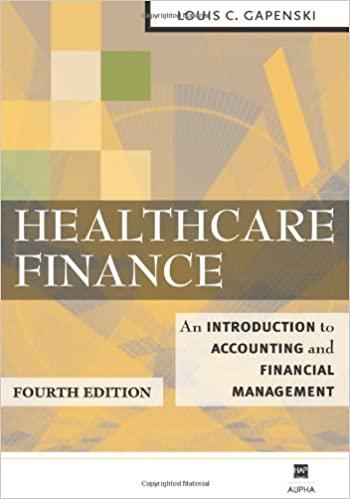Question
1. You just calculated a value of $33 for a stock. It is selling in the market for $25. What should you do? don't buy
1.
You just calculated a value of $33 for a stock. It is selling in the market for $25. What should you do?
don't buy it
buy it
short sell it
2.
Which factors are the most important in valuing stock?
Mark all that apply
required return
D0
growth rates
Does the stock pay a dividend?
3. Suppose a company is going to grow very, very slowly for the next 2 years: 1% per year. Then it will rise to 7% a year for three years before going to a constant rate of 4%. If D0 was $3.50 and the market requires an 8% rate of return on this stock, what price should it be selling for?
4. Suppose a company is going to grow very, very rapidly for the next 3 years: 150% per year. Then it will drop to 70% a year for three years before going to a constant rate of 4%. At the end of the supernormal growth period, what would be the future price of all the dividends past the supernormal growth period if D0 was $1.00 and we require a 12% rate of return?
5.
Suppose a company is going to grow very, very rapidly for the next 3 years: 150% per year. Then it will drop to 70% a year for three years before going to a constant rate of 4%. Using Supernormal growth valuation techniques, what would be the last dividend you would need to calculate in order to proceed to the next step.
Group of answer choices
D6
D5
D3
D4
D7
6. Suppose a company just paid a dividend of $1.50. It is expected to increase its dividend by 2% per year forever. If the market requires a return of 9% on assets of this risk level, what is the dividend yield? (answer in decimal format and round to the nearest 0.000.)
7. Suppose a company just paid a dividend of $1.50. It is expected to increase its dividend by 2% per year forever. If the market requires a return of 9% on assets of this risk level, what is the capital gain yield? (answer in decimal format and round to the nearest 0.000.)
8. Suppose a company just paid a dividend of $1.50. It is expected to increase its dividend by 2% per year forever. If the market requires a return of 9% on assets of this risk level, how much should the stock be selling for? (round to nearest cent)
9. If a bond pays $40 every year forever and you require 5% to invest in the bond, what is the price you are willing to pay for the bond?
10.The most common form of perpetuity is:
non-constant growth stock
preferred stock
zero coupon bonds
Step by Step Solution
There are 3 Steps involved in it
Step: 1

Get Instant Access to Expert-Tailored Solutions
See step-by-step solutions with expert insights and AI powered tools for academic success
Step: 2

Step: 3

Ace Your Homework with AI
Get the answers you need in no time with our AI-driven, step-by-step assistance
Get Started


